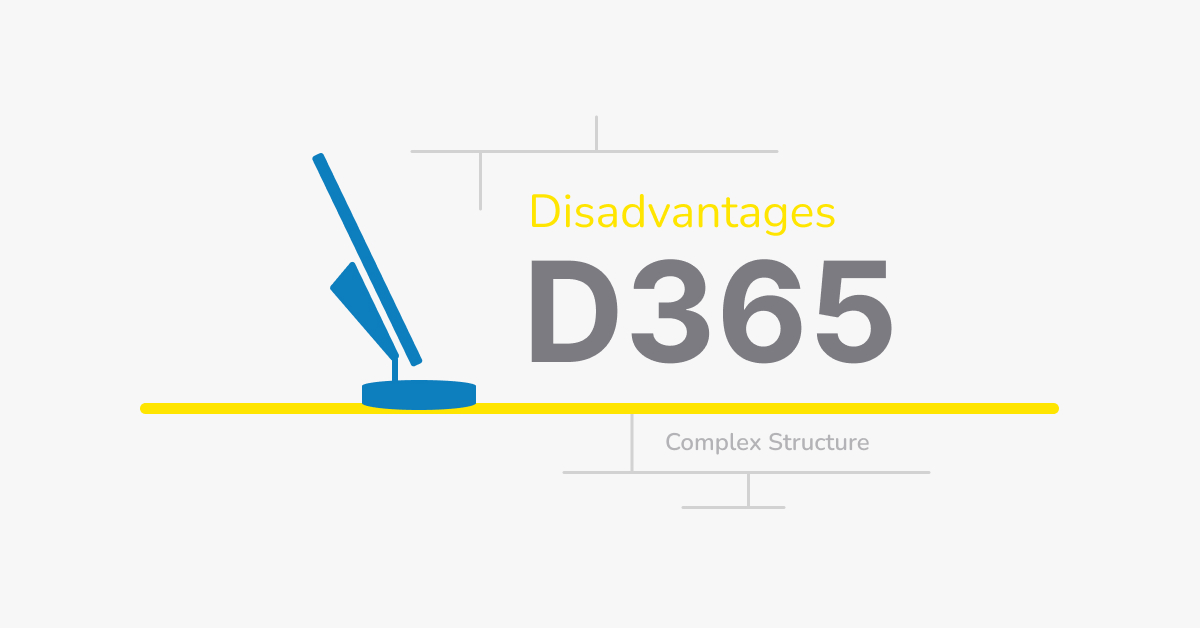When it comes to enterprise resource planning (ERP) and customer relationship management (CRM) software, Microsoft Dynamics is a household name. With its user-friendly interface, customizable features, and seamless integration with other Microsoft products, it’s no wonder that so many businesses have chosen to adopt it.

However, with any software comes potential disadvantages, and Microsoft Dynamics is no exception. But what if we were to approach these “disadvantages” as opportunities for growth and innovation?
Complex Structure
One potential disadvantage of Microsoft Dynamics is its complexity. While the software’s robust features make it a powerful tool for managing a wide range of business operations, it can also be overwhelming to navigate for those who are not well-versed in ERP and CRM systems.
The complexity of the software can lead to confusion, mistakes, and difficulties in using the system to its full potential, which can ultimately impact business performance.
However, rather than shying away from the complexity, businesses can embrace it as a chance to upskill their employees and invest in training programs that help them become experts in the software. This not only enhances their own skill sets but also increases the value they bring to the company.
Cost of Maintenance and Implementation
Microsoft Dynamics is not cheap, and the initial investment can be daunting for small and medium-sized businesses.
However, businesses can leverage it as an opportunity to evaluate their budgeting processes and make strategic decisions about how to allocate resources.
Moreover, by investing in software, businesses can streamline their operations and reduce costs in the long run.
Scalability
Scalability is the ability of a software or system to adapt and grow in response to increased demands or changing needs. In Dynamics, scalability refers to the ability of the software to accommodate the needs of businesses as they grow and evolve over time.
While Microsoft Dynamics is designed to scale, it can be challenging for some businesses to expand and grow with the software.
As a company grows and expands, its ERP and CRM needs may change, and the software may not be able to keep up with those changing needs.
Compatibility Issues
Microsoft Dynamics 365 (D365) is designed to work seamlessly with other Microsoft products, but there may be compatibility issues when trying to integrate the software with other non-Microsoft systems.
For example, many businesses still use older, legacy systems that may not be compatible with D365. If a company is looking to switch to Microsoft Dynamics from an older system, it may need to invest time and resources in upgrading or replacing those legacy systems to ensure they can work with D365.
Dynamics also has certain hardware requirements that must be met to ensure optimal performance. If a business’s hardware is not compatible with D365’s requirements, the software may not function correctly or may experience performance issues.
Steep Learning Curve
Dynamics products can have a steep learning curve, particularly for users who are not familiar with the software or its underlying technology. This can result in a slow adoption rate, user frustration, and reduced productivity.
For example, if a business decides to adopt Dynamics 365 as its customer relationship management (CRM) system, employees may need to learn how to navigate the user interface, enter and track customer data, generate reports, and use other features and functions.
Depending on the employee’s prior experience and technical aptitude, this may take several days, weeks, or even months to become fully comfortable with the software.
Conclusion
While Microsoft Dynamics may have its disadvantages, it can also be viewed as opportunity for growth and innovation. By embracing the complexity, investing in training, evaluating budgeting processes, and developing custom solutions, businesses can turn these potential weaknesses into strengths and set themselves up for long-term success.
So why not break the mold and take advantage of these opportunities?



